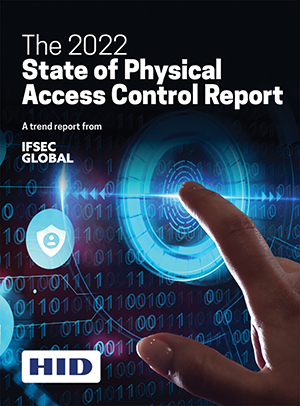

Towards the end of 2022, HID Global held a technology seminar in Johannesburg, part of a roadshow the company held in South Africa. The seminar gave attendees some insights into what HID has been up to, naturally focusing on the technology it is delivering for the access control industry today.
Vikki Vink launched proceedings, welcoming the attendees and giving a brief overview of HID, noting it has been involved in trusted identities for over 30 years. The company is not only focused on access control, but various identity solutions, from electronic cards to mobile identity and even passports. In the access control world, its goal is to offer the access solutions, but also to deliver insight into people, places and things.
When it comes to physical access control (PAC), the focus on the seminar, she said HID offers a full solution, including card credentials, readers and controllers, mobile credentials and biometrics, as well as a cloud management platform. The company’s research (The 2022 State of Physical Access Control Report, available via www.securitysa.com/*hid5) also noted that there are challenges its users face, which it needs to cater to, one being convenience for users as well as administrators.
Vink said the company is focused on making it easier to issue and revoke credentials, as well as compliance with global security and privacy regulations, while also protecting users from security vulnerabilities. It is also focused on integration in the enterprise market as a means to dealing with these challenges and to use PAC as a trigger for the move to intelligent buildings.
One of the surprising findings from the company’s research is that 67% of respondents from around the world are still using legacy (and insecure) 125 kHz proximity or magstripe cards. Apparently, the obstacles to upgrading are the costs (as expected), but also the potential for business disruption as well as compatibility issues, as the legacy technology has had a long run and is used in a variety of solutions. Upgrading also lacks a compelling ROI and is not a business priority.
The top trend in the report is that mobile credentials are, after a slow start, making more of an impact and this market is growing. A quarter of the respondents already use mobile credentials, although perhaps not throughout their companies as yet, while 42% plan to integrate mobile in the future. (As noted in the Smart Access & Identity 2023 Handbook, moving to mobile credentials can be done in a cost effective, phased approach. See www.securitysa.com/18442r).
Signo readers and credentials
The seminar was also used as a platform to introduce HID’s new Signo 20 (mullion) and Signo 40 (wall mount) readers (both have ‘K’ versions which include a keypad). Attendees were informed that the new readers offer improved versatility, better performance in terms of installation and operation, as well as improved connectivity. They support Seos credentials (including mobile credentials as well as OSDP (Wiegand as well). To ensure longevity and security, the devices’ firmware can be upgraded over the network.
Some of the features of the Signo readers include automatic surface detection to help installers and prevent metal surfaces from interfering with the read range. Intelligent Power Mode is also included to put the readers into a low-power state when not in use in order to save energy; and the devices are IP65 rated by default.
Management is simplified with the new HID Reader Manager, which is even available as a mobile app. The software supports Seos, which is much more secure than previous credentials. The company is also making integration easier through its API and SDK.
A Signo reader that includes HID’s Lumidigm fingerprint biometrics, the Signo 25B, will also be available. It features all the Signo functionality plus using biometrics as your credential, or a combination of biometrics and other credentials. This device is rated IP67 and IK09. The HID Biometric Manager will make it simpler to manage this reader.
For users wanting to manage their access from the cloud, HID Origo is now available as a cloud-based management portal. It is hosted on AWS. All Signo readers are Mobile ID ready, and credentials can be delivered to the user’s mobile app via Origo.
Boosting mobile access
Ilze Blignaut ended the presentations by looking at HID’s Mobile ID and how it benefits access control installations and the management thereof. The first point she mentioned was convenience. Loss of cards is a cost to companies both in terms of time and money, and users today are far more concerned about keeping their mobile devices on them and looking after them than they would be about a card.
Mobile IDs also make management of access easier as even multi-site installations can provision their users centrally, over the air, in a secure manner. Deprovisioning can be done in the same way. As with the other products mentioned, the company has an API and SDK ready to allow customers to add mobile functionality as required.
Mobile IDs are also more secure as access can be stopped almost instantly if a device is lost or stolen, while the credential is also protected by the biometric or PIN on the user’s device. These credentials can also be used with traditional cards, making use of NFC or Bluetooth. To date there are over 250 readers supporting mobile credentials, and as the report showed, its usage is expected to rise significantly over the next few years.
After the presentations users were invited to stay for a bite to eat and to have a look at the new devices in HID’s line-up.
| Tel: | +27 11 543 5800 |
| Email: | [email protected] |
| www: | www.technews.co.za |
| Articles: | More information and articles about Technews Publishing |
| Tel: | +971 4 516 4000 |
| Email: | [email protected] |
| www: | www.hidglobal.com |
| Articles: | More information and articles about HID Global |
© Technews Publishing (Pty) Ltd. | All Rights Reserved.